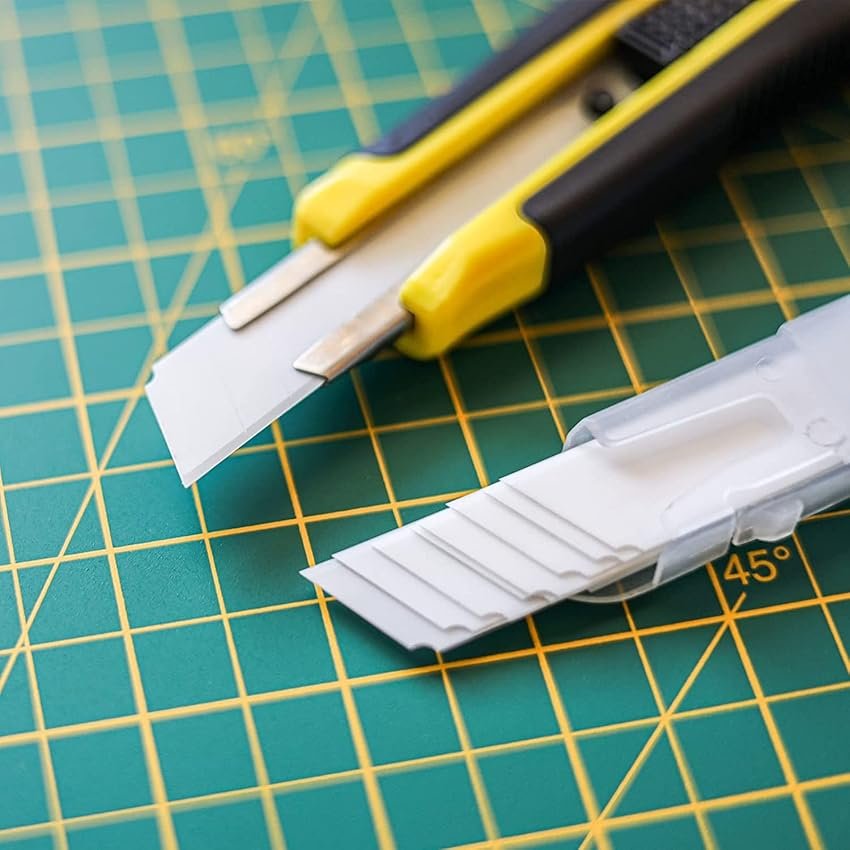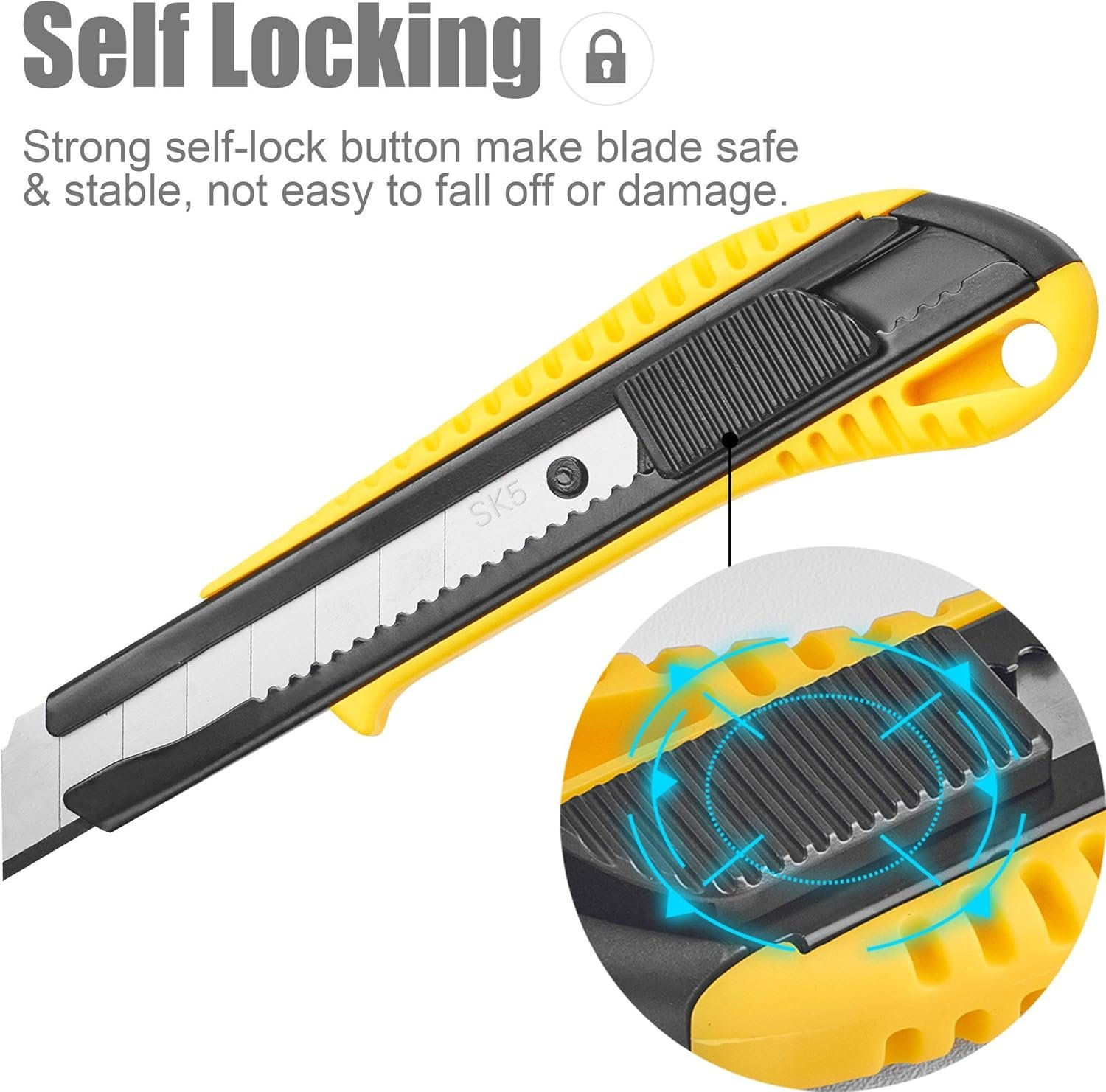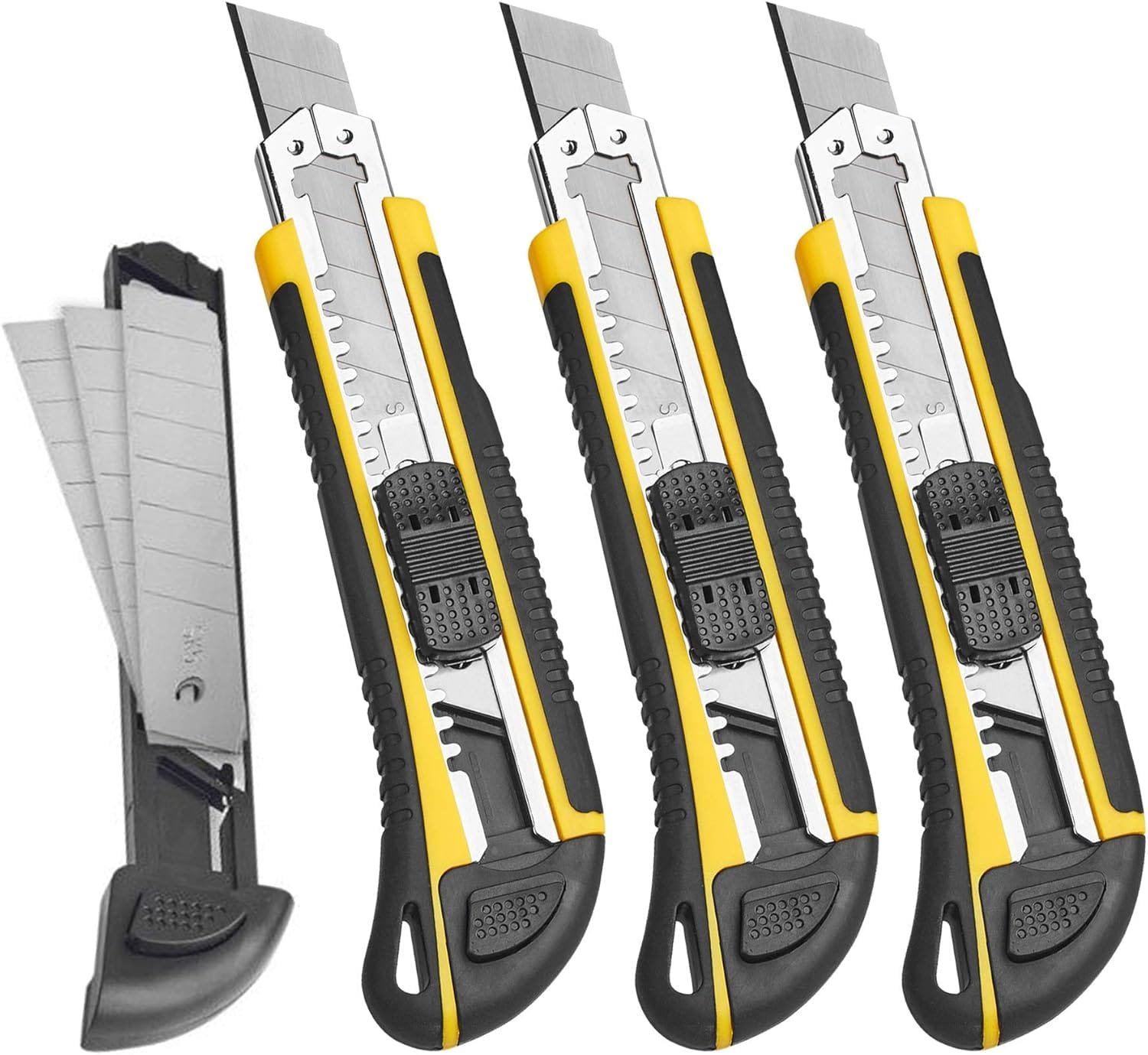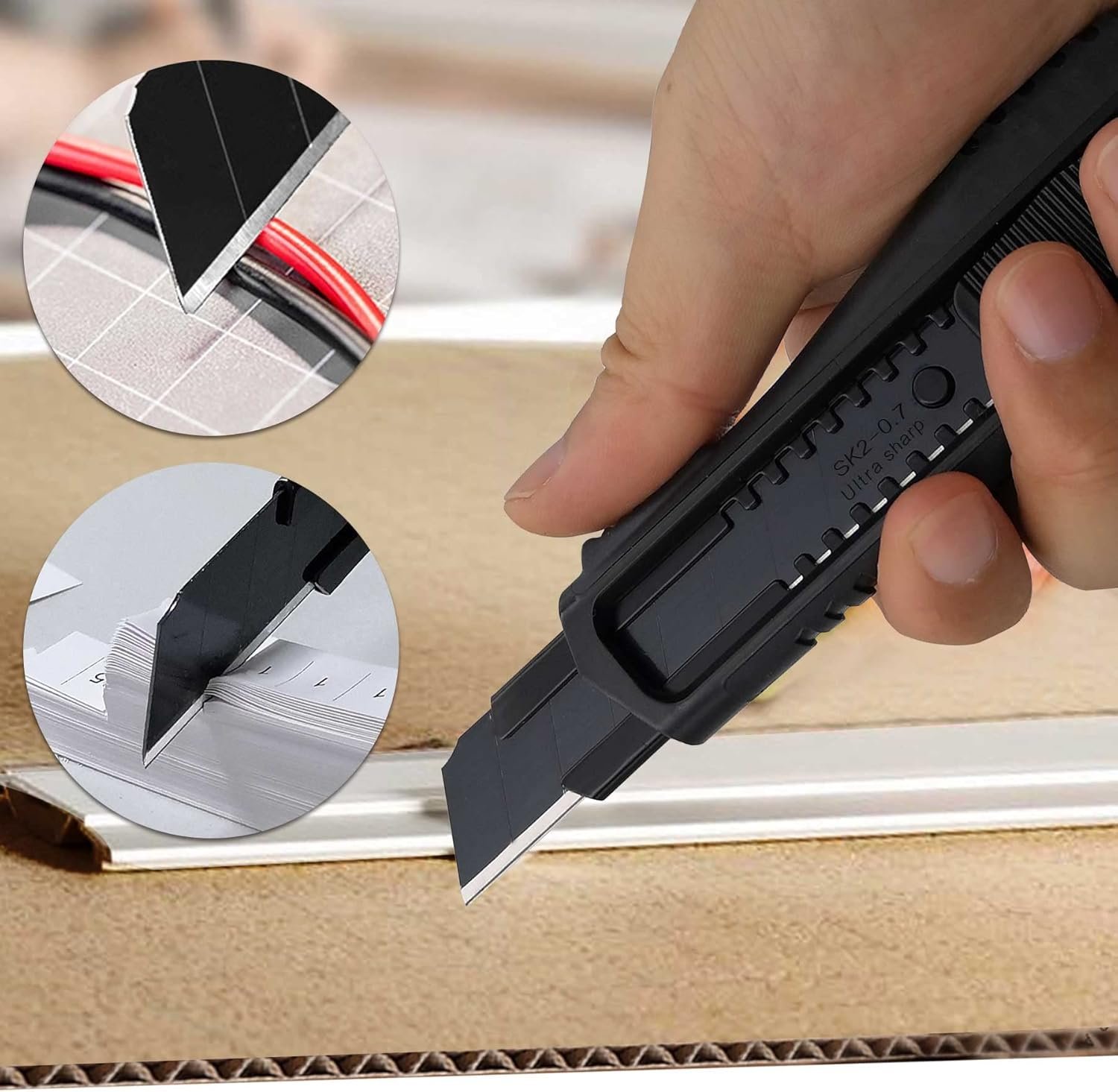Utility knives are indispensable tools found in various settings, from construction sites to home workshops. They are versatile and efficient for cutting tasks, but like any cutting tool, they require maintenance, particularly when you need to change the blade in a utility knife. This guide will provide you with detailed instructions on how to change the blade in a utility knife, ensuring you can keep your tool in optimal working condition.

Understanding Your Utility Knife
Before diving into the process of changing the blade in a utility knife, it’s essential to understand the components of this tool. Most utility knives consist of:
- Handle: The part you grip.
- Blade: The cutting component that can be replaced.
- Blade Locking Mechanism: Keeps the blade securely in place during use.
- Blade Storage: Some models have a compartment for spare blades.
@nx.tools Utility Knife Series Products,Various types of practical utility knives, high-performance utility knives, sharp and durable, customizable.
Importance of Changing Blades
Changing the blade in a utility knife is crucial for several reasons. A dull blade can lead to inefficient cutting, increased effort, and potential safety hazards. Regularly changing your utility knife blade ensures:
- Safety: Dull blades can slip and cause injuries.
- Efficiency: Sharp blades cut through materials more easily.
- Quality of Work: Clean cuts enhance the quality of your projects.

Steps to Change the Blade in a Utility Knife
The process for changing the blade in a utility knife may vary slightly depending on the type of utility knife you have (e.g., retractable, folding, or fixed-blade). Below are general steps applicable to most models when you need to change the blade in a utility knife.
Step 1: Gather Your Materials
Before you begin, make sure you have:
- A new utility knife blade
- Cut-resistant gloves (for safety)
- A screwdriver (if required for your knife model)
Step 2: Prepare Your Workspace
Ensure your workspace is clean and well-lit. This will help you avoid accidents and misplacing parts while you change the blade in a utility knife.
Step 3: Open the Utility Knife
Depending on your model:
- Retractable Knives: Simply retract the blade fully.
- Folding Knives: Open the knife according to its design (usually by pressing a button or sliding a mechanism).
- Fixed-Blade Knives: You may need to unscrew or unclip the handle to access the blade compartment.
Step 4: Remove the Old Blade
Carefully remove the old blade:
- For retractable knives, there’s usually a button or lever that releases the blade. Press this and slide out the old blade.
- For folding knives, once open, you might need to unscrew or unclip a part holding the blade.
- For fixed-blade knives, after opening, simply pull out the old blade from its housing.
Step 5: Insert the New Blade
Take your new utility knife blade and insert it into the same slot from which you removed the old one. Ensure it is seated correctly:
- For retractable models, slide it in until it clicks into place.
- For folding models, align it with any notches or guides before securing it back in place.
Step 6: Secure Everything Back Together
Once the new blade is in place:
- Test the locking mechanism to ensure everything is secure before use.
Step 7: Dispose of Old Blades Safely
Always dispose of old blades responsibly. Many manufacturers offer disposal containers specifically designed for used blades when you change the blade in a utility knife.
Tips for Maintaining Your Utility Knife
To prolong the life of your utility knife and its blades:
- Regularly check and replace dull blades.
- Store your utility knife in a dry place to prevent rusting.
- Clean your knife after use to remove debris that can dull blades.
Types of Utility Knives and Their Uses
Understanding different types of utility knives can help you choose the right one for specific tasks. Here are some common types where you might need to change the blade in a utility knife:
1. Fixed Blade Utility Knife: Offers durability for heavy-duty tasks but lacks portability.
2. Folding Utility Knife: Compact and safe for storage; ideal for outdoor activities.
3. Retractable Blade Utility Knife: Provides safety with adjustable blade lengths; suitable for various cutting tasks.
4. Snap-Off Blade Utility Knife: Allows for easy replacement by snapping off dull segments; great for frequent use.
5. Hook-Blade Utility Knife: Designed for cutting thicker materials like carpet; offers precise control.
Each type has its advantages depending on your cutting needs. Choosing wisely based on tasks can enhance efficiency and safety when you need to change the blade in a utility knife.

Safety Considerations When Using Utility Knives
Using a utility knife safely is paramount. Here are some essential safety tips when handling tools that require changing blades:
- Always cut away from your body to minimize injury risk.
- Use cut-resistant gloves to protect your hands during operation.
- Inspect your knife regularly for wear or damage before use.
- Ensure your work area is clear of obstructions that could interfere with cutting.
- Store knives properly when not in use to prevent accidental injuries.
Following these precautions can significantly reduce accidents and ensure safe usage of utility knives.

Cleaning and Maintenance Tips
Proper maintenance extends the life of your utility knife:
1. Regular Inspection: Check for wear or damage regularly; replace blades as needed when you change the blade in a utility knife.
2. Disassemble for Cleaning: Periodically disassemble your knife according to manufacturer instructions to clean all parts thoroughly.
3. Lubricate Moving Parts: Apply lubricant to mechanisms like sliders or locks to maintain smooth operation.
4. Store Properly: Keep knives in a dry place, preferably in protective cases or organizers designed for tools.
5. Dispose of Blades Safely: Use puncture-resistant containers for used blades to prevent injuries during disposal after changing blades.
By adhering to these maintenance practices, you ensure that your utility knife remains functional and safe over time.
Conclusion
Changing the blade in your utility knife is a straightforward process that enhances both safety and efficiency. By following these steps regularly, especially when you need to change the blade in a utility knife, you ensure that your tool remains effective for all your cutting needs. As a leading utility knife manufacturer, Nxtools emphasizes quality and durability in their products, making them an excellent choice for both professionals and DIY enthusiasts alike.
Frequently Asked Questions (FAQs)
1. How often should I change my utility knife blade?
- Change your blade whenever it becomes dull or damaged; regular use may require changes every few days or weeks depending on cutting frequency when you change the blade in a utility knife.
2. Can I use any type of blade with my utility knife?
- No, always use blades specifically designed for your model to ensure safety and proper function when changing blades.
3. What should I do if my utility knife won’t open?
- Check for any locking mechanisms or screws that may need loosening; if stuck, avoid forcing it as this could cause damage while trying to change the blade in a utility knife.
4. Are there safety features I should look for when buying a new utility knife?
- Yes, consider features like automatic retraction, safety locks, and ergonomic grips for better control when using tools that require changing blades frequently.
5. Where can I buy replacement blades?
- Replacement blades can typically be found at hardware stores, online retailers, or directly from manufacturers like Nxtools when looking for high-quality options.

